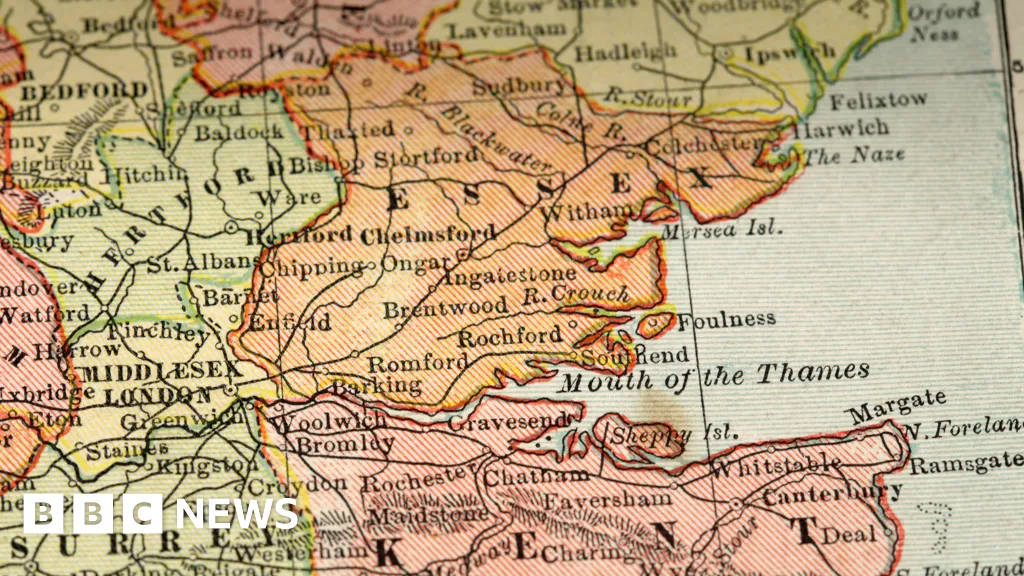Proposals of how to radically shake up local democracy and councils in Essex were published this month.
It would see all of its fifteen councils - a mix of county, district and unitary authorities - abolished.
They would be replaced with a handful of all-purpose councils that provide every local service - from bin collection and house building to social care - known as unitary authorities.
Councillors are set to discuss the plans this week across Essex before the business cases are made to government later this month.
The plan for five unitary authorities has the most cross-party and cross-council support.
Southend-on-Sea City Council has taken the lead on it. It is backed by most Labour and Liberal Democrat MPs, 10 council leaders including independents, and the Conservative leader of Harlow Council.
- SOUTH WEST: Basildon, Thurrock
- SOUTH EAST: Southend, Rochford, Castle Point
- WEST: Harlow, Epping Forest, Uttlesford
- MID: Chelmsford, Brentwood, Maldon
- NORTH EAST: Colchester, Braintree, Tendring
According to the authors, it will "reflect real communities" and "travel-to-work patterns"
Each new authority would have a population between 326,000-510,000.
Five super councils will achieve "economies of scale while maintaining strong local representation", they add.
The authors argue it will be a smoother and cheaper transition trimming 15 councils down to five - rather than three authorities for example - because there would be fewer redundancies.
Analysis by accountancy firm Grant Thornton suggests a five unitary model will bring in a £35m net benefit by 2032-33.
They say "earlier intervention, prevention and pooled commissioning under a five-authority system could eliminate current deficits and achieve substantial annual saving" in adult social care.
If there were fewer than five councils, the report argues that communities with deprivation like Jaywick and Clacton's Pier Ward "will struggle for representation" over "too wide a region".
Essex County Council is proposing a three council model. The Conservative-run authority's plan is also supported by the Tory leader of Epping Forest District Council.
- NORTH: Colchester, Tendring, Braintree, Uttlesford
- MID: Chelmsford, Harlow, Epping Forest, Brentwood, Maldon
- SOUTH: Southend, Basildon, Thurrock, Castle Point, Rochford
Their report states "bureaucracy, duplication and inefficiencies built into the two-tier system of [local] government are holding us back".
Delivering "housing, economic growth and infrastructure is likely to be successful across all three unitary areas".
Seven hundred councillors would be reduced to 284 across Essex, the report said.
This three city-based unitary model "is the most cost effective", with their report saying more than £380m of savings could be achieved by 2040.
The number of social care departments will not increase as part of this model, the authors claim.
Essex County Council argues only this option saves money after five years.
Modelling from auditing and consultancy firm PwC suggests there will be a net benefit of £86m.
It sates that the transition costs from the current 15 councils is cheaper the fewer unitary authorities there are.
Both Thurrock and Rochford Council are proposing four unitary councils - but a different version from each other.
Neither plan currently has support further afield.
Thurrock argues their plan better represents the transport and economic connections within these new four council areas.
- WEST: Harlow, Epping Forest, Brentwood, Thurrock
- SOUTH: Southend, Basildon, Castle Point, Rochford
- NORTH: Chelmsford, Braintree, Uttlesford
- EAST: Colchester, Maldon, Tendring
Rochford's proposal:
- WEST: Harlow, Epping Forest, Uttlesford
- SOUTH: Southend, Basildon, Castle Point, Thurrock
- CENTRAL: Chelmsford, Brentwood, Maldon, Rochford
- NORTH: Colchester, Braintree, Tendring
PwC's modelling suggests there could be a net financial benefit after seven years of £15.6m.
There are no proposals for these options.
One Essex council of 1.9 million people would be three times the size of the largest non-metropolitan council in England: North Yorkshire.
As for a model of two, Essex County Council argued that "would weaken accountability and local identity" and would be "too large".
Politics is in play.
Traditionally, taken as a whole, Essex has been more Conservative.
The Essex-wide elections for police fire and crime commissioner have always been won by the Tories, as has the county council for more than two decades.
The fewer and larger the new unitary authorities are, the greater the chance that the Tories will be in charge - that's the general theory.
Whereas more councils covering smaller geographic areas should favour other parties and coalitions.
This is partly why broadly the Conservatives back three and Labour, the Lib Dems and independent-led councils tend to support five. They have evidence to make their opposing cases.
Recent opinion polls and local election results have shown strong support for Clacton MP Nigel Farage's Reform UK party. So whatever the shape and size of the new councils, predicting the outcome of future elections is arguably a folly.
It has been acknowledged by Essex councils and the government that Thurrock's debt, which is set to rise above £1bn next year, cannot be managed locally.
Unlike other councils in Essex whose debt is supported by assets, Thurrock's is a result of mismanagement of investments that went wrong.
Essex County Council states in its proposal: "We are seeking early confirmation of the continuing support the government will provide and welcome ongoing discussions about how the residual debt may be supported."
Councillors locally say they do not expect any new authority including Thurrock to be burdened by their existing debt; but the government is yet to make an announcement.
